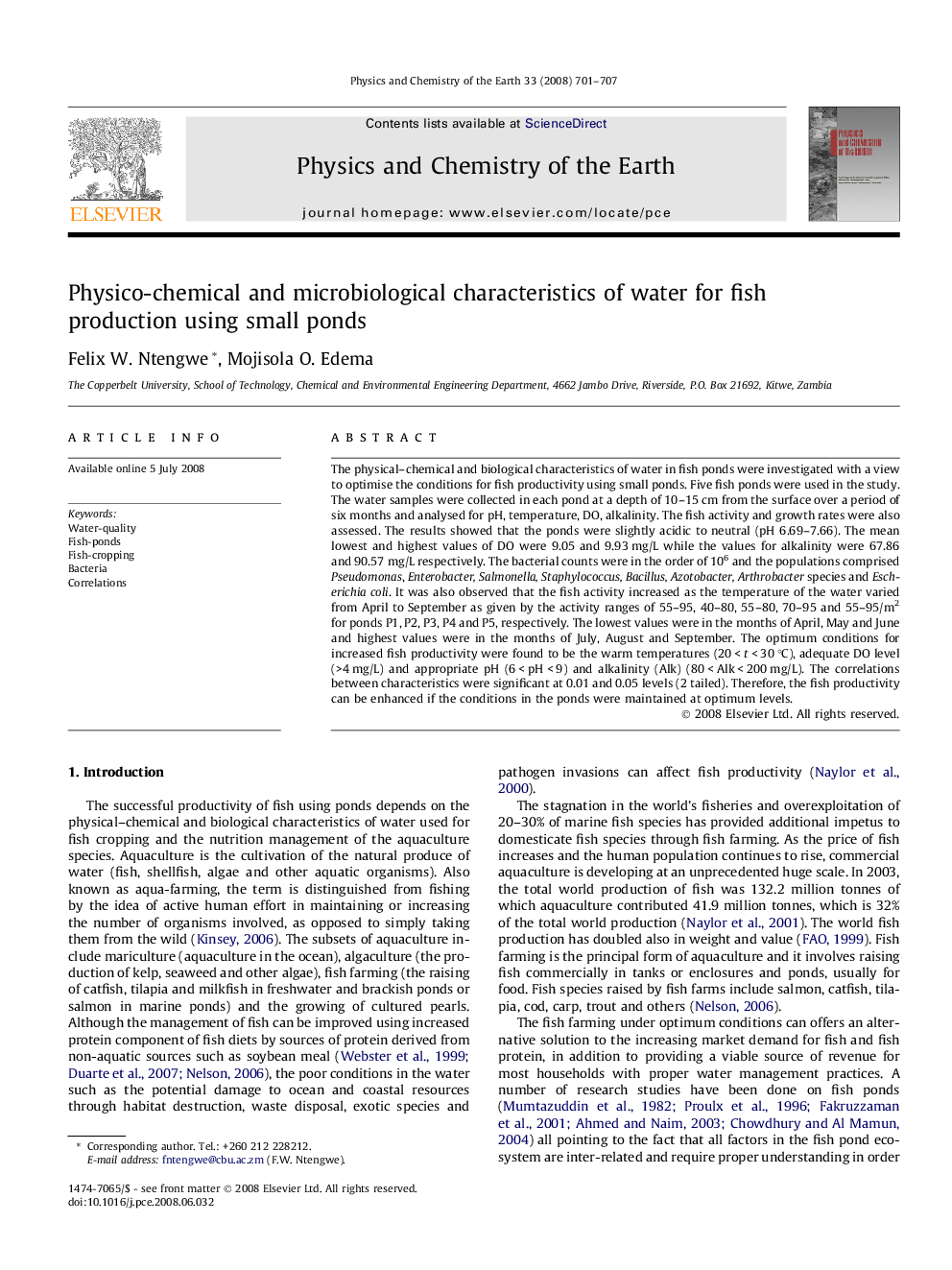| Article ID | Journal | Published Year | Pages | File Type |
|---|---|---|---|---|
| 4721724 | Physics and Chemistry of the Earth, Parts A/B/C | 2008 | 7 Pages |
Abstract
The physical-chemical and biological characteristics of water in fish ponds were investigated with a view to optimise the conditions for fish productivity using small ponds. Five fish ponds were used in the study. The water samples were collected in each pond at a depth of 10-15 cm from the surface over a period of six months and analysed for pH, temperature, DO, alkalinity. The fish activity and growth rates were also assessed. The results showed that the ponds were slightly acidic to neutral (pH 6.69-7.66). The mean lowest and highest values of DO were 9.05 and 9.93 mg/L while the values for alkalinity were 67.86 and 90.57 mg/L respectively. The bacterial counts were in the order of 106 and the populations comprised Pseudomonas, Enterobacter, Salmonella, Staphylococcus, Bacillus, Azotobacter, Arthrobacter species and Escherichia coli. It was also observed that the fish activity increased as the temperature of the water varied from April to September as given by the activity ranges of 55-95, 40-80, 55-80, 70-95 and 55-95/m2 for ponds P1, P2, P3, P4 and P5, respectively. The lowest values were in the months of April, May and June and highest values were in the months of July, August and September. The optimum conditions for increased fish productivity were found to be the warm temperatures (20 < t < 30 °C), adequate DO level (>4 mg/L) and appropriate pH (6 < pH < 9) and alkalinity (Alk) (80 < Alk < 200 mg/L). The correlations between characteristics were significant at 0.01 and 0.05 levels (2 tailed). Therefore, the fish productivity can be enhanced if the conditions in the ponds were maintained at optimum levels.
Keywords
Related Topics
Physical Sciences and Engineering
Earth and Planetary Sciences
Geochemistry and Petrology
Authors
Felix W. Ntengwe, Mojisola O. Edema,
